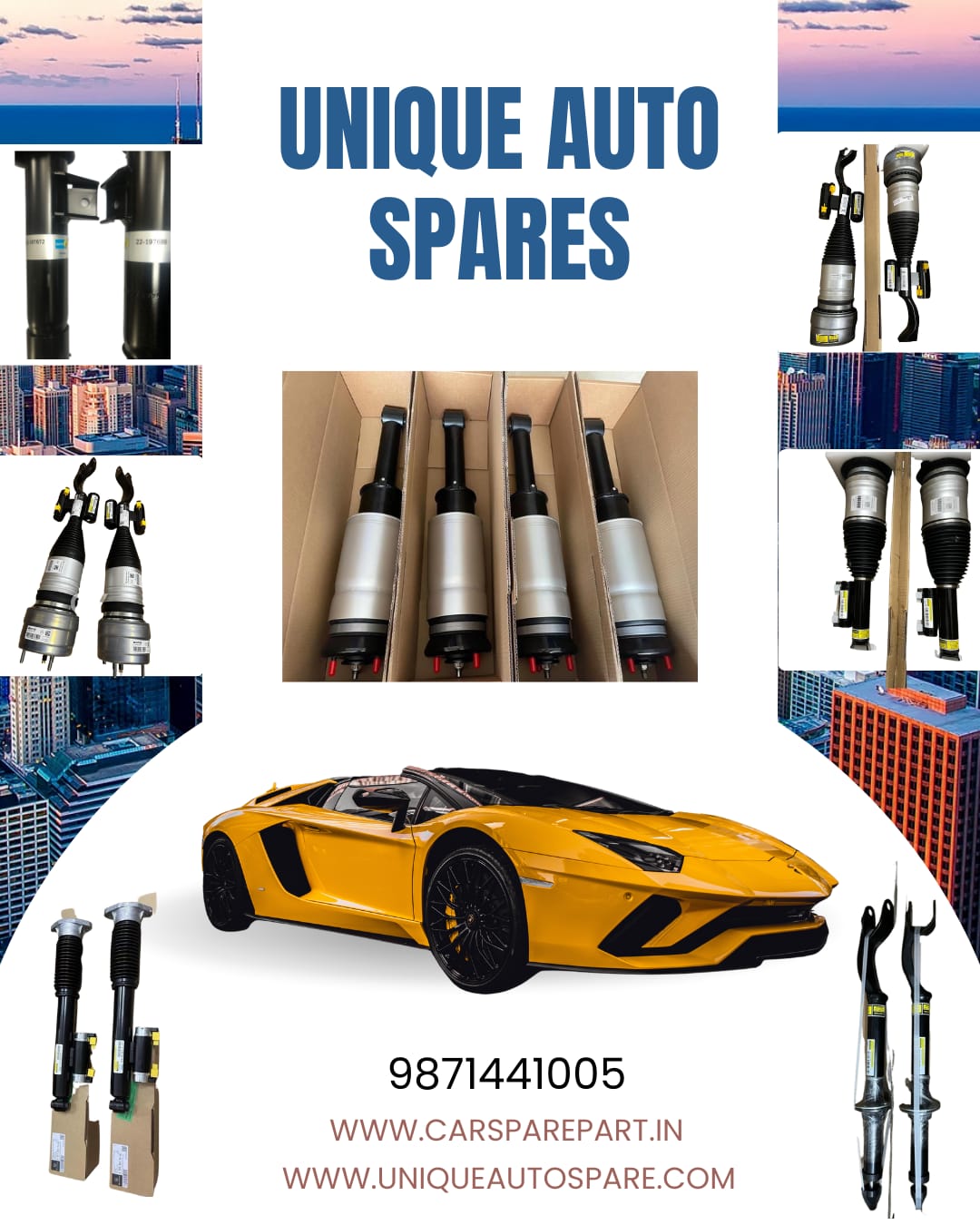
The suspension system in the Porsche Cayenne is...

The suspension system in the Porsche Cayenne is designed to provide both performance and comfort, reflecting the vehicle's dual role as a high-performance SUV and a luxury vehicle. The shock absorbers (often referred to as "shocks") are a critical component of this system. They work alongside other suspension components to manage ride quality, handling, and stability. Types of Shock Absorbers in the Porsche Cayenne Standard Shock Absorbers: These are hydraulic dampers that control the up-and-down motion of the wheels. Common in base models and provide a good balance between comfort and handling. PASM (Porsche Active Suspension Management) Shock Absorbers: These electronically adjustable dampers allow for real-time adjustment of the damping force. PASM adjusts the suspension stiffness based on driving conditions and driver preferences, offering modes such as Comfort, Sport, and Sport Plus. Air Suspension with Adaptive Dampers: Available as an option or standard in higher trims. Combines air springs with adaptive dampers to provide adjustable ride height and adaptive damping. Allows the driver to adjust the vehicle's height for different driving conditions, such as off-road or highway driving. Key Components of the Suspension System Shock Absorbers (Dampers): Control the movement of the suspension and the body of the vehicle. Ensure the tires maintain contact with the road for better handling and braking. Air Springs: Found in models with air suspension. Use compressed air to provide a variable spring rate, improving comfort and allowing for adjustable ride height. Control Arms: Connect the wheels to the chassis and allow for controlled movement. Important for maintaining proper alignment and handling characteristics. Bushings and Mounts: Provide cushioning between suspension components and the chassis. Help reduce noise, vibration, and harshness (NVH). Common Issues and Maintenance Worn Shock Absorbers: Over time, shock absorbers can wear out, leading to reduced damping performance. Signs include excessive bouncing, poor handling, and a rough ride. Leaking Shock Absorbers: Hydraulic fluid can leak from the shocks, reducing their effectiveness. Visible signs of leakage on the shock body or on the ground beneath the vehicle. Faulty Air Suspension Components: Air springs can develop leaks, leading to sagging suspension or uneven ride height. Air compressor or valves may fail, causing the system to malfunction. Sensor and Control Unit Issues: Malfunctioning sensors or control units can lead to incorrect suspension adjustments. Error messages or warning lights may appear on the dashboard. Replacement and Repair Shock Absorbers: Replace worn or leaking shock absorbers with OEM (Original Equipment Manufacturer) or high-quality aftermarket parts. Ensure proper installation to maintain handling and ride quality. Air Suspension Components: Inspect and replace leaking air springs, faulty compressors, and malfunctioning control valves as needed. Regularly check air lines for leaks or damage. Sensors and Control Units: Use diagnostic tools to identify and replace faulty sensors or control units. Ensure proper calibration after replacement. DIY Replacement Guide for Shock Absorbers Note: Replacing shock absorbers can be a complex task, especially with advanced systems like PASM or air suspension. If you are not experienced with automotive repairs, it is recommended to seek professional assistance. Tools and Materials: Jack and jack stands Socket set and wrenches Screwdrivers Torque wrench New shock absorbers Procedure: Raise the Vehicle: Safely lift the vehicle using a jack and secure it with jack stands. Remove the Wheel: Take off the wheel to access the shock absorber. Disconnect the Shock Absorber: Remove the bolts and nuts securing the shock absorber to the suspension. Remove the Old Shock Absorber: Carefully take out the old shock absorber. Install the New Shock Absorber: Place the new shock absorber in position and secure it with bolts and nuts. Use a torque wrench to tighten to the manufacturer’s specifications. Reassemble and Test: Reinstall the wheel, lower the vehicle, and test the suspension for proper operation. Conclusion Maintaining the shock absorbers and other suspension components of your Porsche Cayenne is essential for ensuring optimal performance, safety, and ride comfort. Regular inspections and timely replacements can help prevent issues and keep your vehicle handling like new. Whether dealing with standard shocks, PASM, or air suspension components, using high-quality parts and proper procedures is key to maintaining your vehicle’s suspension system.
Keywords
Subscribe for latest offers & updates
We hate spam too.


